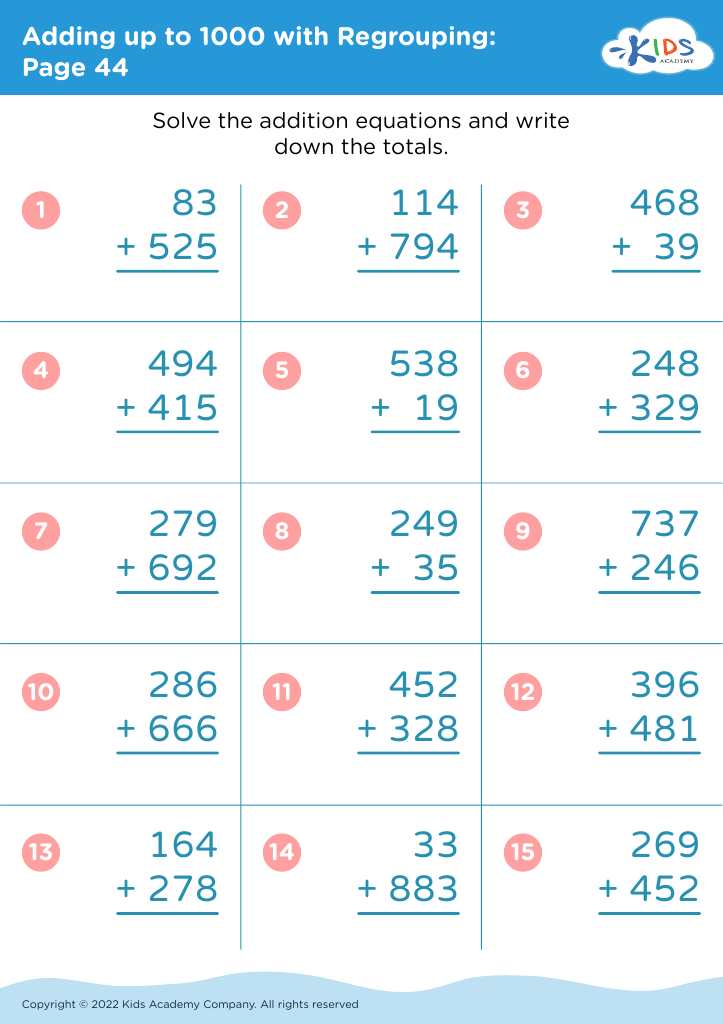Understanding sequencing Grade 3 Addition Worksheets
3 filtered results
-
From - To
Discover our engaging Grade 3 Addition Worksheets focused on understanding sequencing! These worksheets are designed to help students master the order of operations in addition. By practicing with various problems, learners will enhance their critical thinking and problem-solving skills. Our user-friendly format includes visual aids and step-by-step instructions to aid comprehension. Each worksheet emphasizes sequencing in addition, ensuring children develop a strong foundation in math. Ideal for classroom or home use, these resources are perfect for reinforcing lessons while making learning enjoyable. Help your child excel in math by exploring our comprehensive collection of Grade 3 addition worksheets today!
Understanding sequencing in Grade 3 addition is crucial for both parents and teachers because it lays the foundational skills necessary for complex math concepts. At this stage, students are transitioning from basic addition to more advanced problem-solving methods that require logical reasoning and the ability to follow a sequence of steps to arrive at a solution.
Parents and teachers should care about sequencing because it enhances children's cognitive development, helping them grasp how numbers and operations relate to one another. When children learn to sequence their addition steps – such as adding the ones place before the tens – they improve their accuracy and efficiency in solving problems.
Additionally, grasping sequencing in addition creates a strong basis for understanding more complicated operations, such as subtraction and multiplication, which often involve similar sequential steps. By nurturing these skills early, parents and teachers can boost children's confidence in math, making them more willing to tackle challenges in the future.
In summary, focusing on sequencing tasks in Grade 3 addition ultimately prepares students for future academic success, instills problem-solving skills, and contributes to a positive attitude towards mathematics.



















